|
|
|
|
 |
BIRDS: Swallows |
|
|
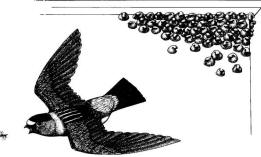
Fig. 1. Cliff swallow (Hirundo
pyrrhonota) with nests on a building
Identification
Eight members of the
swallow family Hirundinidae breed in North America: the
tree swallow (Tachycineta bicolor), violet-green swallow
(Tachycineta thalassina), purple martin (Progne subis),
bank swallow (Riparia riparia), northern rough-winged
swallow (Stelgidopteryx serripennis), barn swallow (Hirundo
rustica), cave swallow (Hirundo fulva), and the cliff
swallow (Hirundo pyrrhonota). Of the eight species, barn
and cliff swallows regularly build mud nests attached to
buildings and other structures, a habit that sometimes
puts them into conflict with humans. This is
particularly true of the cliff swallow, which nests in
large colonies of up to several hundred pairs. Barn
swallows tend to nest as single pairs or occasionally in
loose colonies of a few pairs. Some homeowners consider
barn swallows to be at most a minor nuisance. Many
homeowners tolerate nesting barn swallows as pleasant
and interesting summer companions around the home. This
chapter will focus on cliff and barn swallows because of
their close association with humans. The cliff swallow,
5 to 6 inches (13 to 15 cm) in length, is the only
square-tailed swallow in most of North America (Fig. 1).
It is recognized by a pale, orange-brown rump, white
forehead, dark, rust-colored throat, and steel-blue
crown and back. The cave swallow is similar in
appearance, but has a rust-colored forehead and pale
throat; it is restricted to southeast New Mexico and
central, south, and west Texas.
The barn swallow, 5 3/4 to
7 3/4 inches (15 to 20 cm) in length, is the only
swallow in the United States with a long, deeply forked
tail (Fig. 2). Barn swallows have steel-blue plumage on
the crown, wings, back, and tail. The forehead, throat,
breast, and abdomen are rust colored. Females are
usually duller colored than the males.
Range
Cliff and barn swallows
are found throughout most of North America. Breeding
occurs northward to Alaska and the Yukon, across Canada,
throughout the western United States, and south into
Mexico. Barn swallows are common nesters in most of the
southern United States, except Florida. Until recently,
cliff swallows did not breed in the southern United
States east of central Texas and south of west-central
Tennessee or western Kentucky. Reports of new colonies
in eastern Tennessee, Louisiana, Alabama, Arkansas,
Mississippi, and Florida suggest a range expansion into
the southern Atlantic seaboard and Gulf Coast states.
Barn swallows are also found in Europe, North Africa,
and Asia.
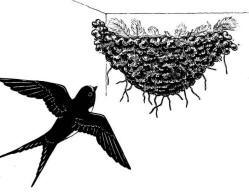 Fig.
2. Barn swallow with open, cup-shaped nest lined with
feathers. Fig.
2. Barn swallow with open, cup-shaped nest lined with
feathers.
Habitat
Four basic conditions are
found near most cliff and barn swallow nest sites:
(1) an open habitat for
foraging, (2) a suitable surface for nest attachment
beneath an overhang or ledge, (3) a supply of mud of the
proper consistency for nest building, and (4) a body of
fresh water for drinking.
The original nesting sites
of cliff swallows were cliffs and walls of canyons and
vertical banks, usually along permanent streams. Human
structures (for example, buildings, bridges) and
agricultural-related activities (irrigation, canals,
reservoirs) have increased the number and distribution
of suitable nesting sites, and cliff swallow populations
have increased accordingly. Historically, cliff swallows
were presumed to be most common in the western
mountains. They spread eastward following human
settlement and development of eastern North America.
The preferred habitat of
barn swallows includes open forests, farmlands, suburbs,
and rural areas with buildings that provide nest sites.
Like cliff swallows, barn swallows have benefited from
human activities. Their nests, originally built on
cliffs or in caves and crevices, are now built on beams
or walls of buildings or other structures. The presence
of livestock and power lines for perching are features
commonly associated with barn swallow nest sites.
Food Habits
All swallows are
insectivores, catching a variety of insects. Stomachs of
375 cliff swallows and 467 barn swallows collected in
different areas of the country contained prey from the
following orders: Hymenoptera (bees, wasps, and ants)
29%, 23%; Coleoptera (beetles) 27%, 16%; Hemiptera (true
bugs) 26%, 15%; and Diptera (flies) 13%, 40% for cliff
and barn swallows, respectively.
Cliff swallows may forage
over areas up to 4 miles (6.4 km) away from the nest.
They forage as a loose unit, and adults may be away from
the colony for hours prior to the hatching of young.
After the young hatch, a more or less steady stream of
adults return to the colony with food for the nestlings.
Barn swallows will fly
several miles from the nest site to suitable foraging
areas. Long periods of continuous rainfall make it
difficult for adult barn and cliff swallows to find
food, occasionally causing nestling mortality.
General
Biology, Reproduction, and Behavior
Migration
Cliff and
barn swallows winter in South America. They begin a
northward migration in late winter and early spring
overland through Central America and Mexico. Swallows
migrate during the day and catch flying insects along
the way. They will not penetrate regions unless flying
insects are available for food, which occurs after a few
days of relatively warm weather, 60 to 70oF (16 to 21oC)
or more. Arrival dates can vary greatly with weather
conditions. In general, cliff and barn swallows enter
the southern United States in mid-March to mid-April and
reach the northern portions of their range by early
June.
Site Selection
Swallows
have a homing tendency toward previous nesting sites.
Under suitable conditions, a nest is quite durable and
may be used in successive years. Most cliff swallows
arrive at a particular colony within a 24-hour period.
At large colonies, swallows may arrive in successive
waves. Resident adults are the first to return, followed
by adults who bred at other colonies, and by young
swallows who have not yet bred. The younger swallows
include individuals not born at the selected colony.
Swallow nests are
inhabited by hematophagous (bloodsucking) insects and
mites. Swallow bugs (Oeciacus vicarius), most common in
cliff swallow nests, can spread rapidly by crawling from
nest to nest in a new colony or by clinging to the
feathers of adults. Infestations of swallow bugs and
mites reduce nestling growth rates and cause up to half
of all nestling deaths. Swallow bugs are able to survive
in unoccupied nests for up to 3 years without feeding
and await returning swallows in spring. In selecting a
nest site, cliff and barn swallows apparently assess
which nests are heavily infested with parasites and
avoid them. Cliff swallow colonies often are not
reoccupied after 1 or 2 years of use because of heavy
infestations. Cliff swallows will even prematurely
desert their nests en masse, leaving their young to
starve, when swallow bug populations become too great.
Nest Construction
Cliff
swallow nests are gourd-shaped, enclosed structures with
an entrance tunnel that opens downward (Fig. 1). The
tunnel may be absent from some nests. The mud pellets
used to build the nest consist of sand and smaller
amounts of silt and clay. The nest chamber is lined
sparingly with grasses, hair, and feathers. The nest is
cemented with mud under the eave or overhang of a
building, bridge, or other vertical surface. The first
cliff swallow nests on structures are usually located at
the highest point possible, with subsequent nests
attached below it, forming a dense cluster.
Barn swallow nests are
cup-shaped rather than gourd-shaped, and the mud pellets
contain coarse organic matter such as grass stems, horse
hairs, and feathers (Fig. 2). The nest cup is profusely
lined with grasses and feathers, especially white
feathers. Barn swallow nests are also typically built
under eaves or similarly protected sites but not
necessarily at the highest point possible. Barn swallows
often use a beam or the protruding edge of a door or
window jamb as the base for the nest, or attach the nest
at the juncture of the two walls of an interior corner.
Both male and female cliff
and barn swallows construct the nest, proceeding slowly
to allow the mud to dry and harden. Depending on mud
supply and weather, nest construction may take 1 to 2
weeks. Mud is collected at ponds, puddles, ditches, and
other sites up to 1/2 mile (0.8 km) away, with many
swallows using the same mud source. A typical cliff
swallow nest contains 900 to 1400 pellets, each
representing one trip to and from the nest.
Among cliff swallows, mud
gathering and nest construction are social activities;
even unmated swallows will start nests. Mated swallows
may build more than one nest per season, even though not
all will be used. A count of nests under construction
will not give an accurate estimate of the number of
breeding cliff swallows.
Egg Laying
Cliff
swallows usually begin laying eggs before the entrance
tunnel is completed. Each day 1 egg is laid until the
clutch, usually 3 or 4 eggs, is completed. In Texas, egg
laying may begin as early as late March to early April,
while in North Dakota nesting may not start until early
to mid-June. Within a large colony, the date of egg
laying varies due to the staggered arrival dates of the
swallows. For small colonies, laying may be more
synchronous.
Barn swallows typically
lay 4 or 5 eggs, but laying may be delayed for some time
after nest building is completed. The breeding season
begins in early April in the south to mid-June in the
northern portions of the range. Barn swallows are
double-brooded, resulting in a prolonged nesting season.
Nest Failures
Renesting
will occur if nests or eggs are destroyed. Nests may
fall because they were built too rapidly or crumble
because of prolonged humid weather or rain. House
sparrows (Passer domesticus) sometimes usurp empty
swallow nests and may also drive off swallows from new
nests. A cliff swallow nest taken over by house sparrows
is identified by the abundant nest lining (grasses,
weeds, feathers, and litter) protruding out of the
entrance tunnel. Cats associated with farm and other
buildings are common predators of barn swallows.
Hatching
Both sexes
incubate the eggs. Incubation begins before the last egg
is laid and ranges from 12 to 16 days for cliff swallows
and 13 to 17 days for barn swallows. Most studies report
incubation of 14 or 15 days. Whitewash on the ground
below the nest or on the rim of the nest entrance is a
sign of newly hatched nestlings inside the nest. This
marking occurs when adults remove fecal sacs from the
nest and later when nestlings defecate from the nest.
Fledging and Postnesting
Period
Cliff
swallow nestlings fledge 20 to 25 days after hatching;
barn swallows fledge in 17 to 24 days. The juvenile
swallows appear similar to adults but are dull colored
and have less sharply-defined color patterns. The
fledglings return to the nest each day for 2 to several
days to be fed before leaving it permanently. Within a
week, juveniles will join flocks and leave the area.
At least some cliff
swallows raise 2 broods in a breeding season. Second
broods are documented from Virginia and West Virginia
but are uncommon in central California. Late nests may
result from renesting attempts after a first failure, or
from late nesters. The time from start of nest building
to departure is 44 to 64 days: 7 to 14 days nest
building, 3 to 6 days egg laying, 12 to 16 days
incubation, 20 to 25 days to fledging, and 2 or 3 days
to leave the nest. Reports of colony occupancy ranging
from 110 to 132 days indicate ample time for 2 broods.
After leaving the nest,
swallows may remain in the general area for several
weeks. By late summer there is a general southward
movement, and by the end of September few swallows
remain in the nest site. Fall migration of swallows is
not well documented.
Damage
Cliff swallows nest in
colonies and often live in close association with
humans. Many swallow colonies on buildings and other
structures are innocuous. In some situations, however,
they can become a major nuisance, primarily because of
the droppings they deposit. In such instances they may
create aesthetic problems, foul machinery, and cause
health hazards by contaminating foodstuffs. Their mud
nests eventually fall to the ground and can cause
similar problems. Parasites found in swallow nests,
including swallow bugs, fleas, ticks, and mites, may
bite humans and domestic animals, although these are not
the usual hosts. In addition, cliff swallow nests are
often used by house sparrows, introducing another avian
pest and its attendant damage problems and potential
health hazards.
Barn swallows nesting
singly or in small groups on a structure can cause
similar problems but of a lesser magnitude due to the
smaller numbers present.
Legal Status
In the United States, all
swallows are classified as migratory insectivorous birds
under the Migratory Bird Treaty Act of 1918. Swallows
are also protected by state regulations. It is illegal
for any person to take, possess, transport, sell, or
purchase swallows or their parts, such as feathers,
nests, or eggs, without a permit. As a result, certain
activities affecting swallows are subject to legal
restrictions.
Permit Requirements
A depredation permit
issued by the US Fish and Wildlife Service may be
required to remove swallow nests. Three of seven
administrative regions of the US Fish and Wildlife
Service in the continental United States require a
permit regardless of the time of year. This includes
nests under construction, completed but empty nests,
nests with eggs or young, or nests abandoned after the
breeding season. Four of the seven regions do not
require a permit if eggs or young birds are not present
in the nest.
If eggs or nestlings are
present, a permit authorizing nest removal or the use of
exclusion techniques is required in every region and
will be issued only if very compelling reasons exist. An
example might be the safety hazard of a nesting colony
located at an airport where aircraft safety is in
question and where other methods of control are not
applicable. In most cases (for example, swallows nesting
on a residence or other building), a permit allowing
lethal control will not be issued.
For permit requirements in
your area, contact the closest US Fish and Wildlife
regional office or USDA-APHIS-ADC district office. At
the first sign of nest building, contact the appropriate
authorities, since swallows can build their nests and
lay eggs in a short time. Timing is critical in those
regions that require a permit. If a swallow problem has
been experienced in the past at a site and is expected
to reoccur, then apply for a permit in advance of the
birds’ return. A fee is charged for a permit.
Damage
Prevention and Control Methods
Exclusion
Exclusion
refers to any control method that denies a bird physical
access to a nest site. Exclusion represents
a relatively permanent, long-term solution to the
problem. A permit is not required for this method except
when eggs or young are in the nest.
Plastic net or poultry
wire can provide a physical barrier between swallows and
a nest site. Mesh size should be about 3/4 inch (1.9
cm); however, 1inch (2.5-cm) mesh has been used
successfully. If plastic net is used, it should be taut
to reduce flapping in the wind, which looks unsightly
and results in tangles or breakage at mounting points.
Do not use mist net or any other thin, flexible net with
loose pockets or wrinkles that could trap or entangle
swallows. For best results, install net or poultry wire
before the swallows arrive. It may be left up
permanently or removed after the nesting season.
Attachment methods may
vary according to site requirements and the degree of
permanence desired. Net can be attached using tape,
staples, velcro, trash bag ties, or plastic fasteners
such as zip ties or polyclips. Polyclips are a useful
aid for installing netting. They snap together through
the netting strands and allow the use of nails, screws,
or wire for attachment. A more elaborate method uses
hooks, such as brass cup hooks, mounted on wooden eaves
and the sides of buildings. An advantage of hooks or
velcro is that the net can be taken down easily during
the nonbreeding period or for painting or maintenance of
light fixtures. If hooks or staples are used, they
should be rust-resistant to avoid unsightly rust stains.
For net, a supporting framework of wooden dowels along
the edges can ease attachment to the hooks and create a
more equal tension on the net (Fig. 3). Net may also be
stapled to or wrapped once or twice around wood laths,
which are then nailed directly to the structure. On a
concrete or cement structure, a power-activated tool,
sometimes called a stud gun, can be used to nail the
wood lath. The net or wire should extend from the outer
edge of the eave down to the sides of the building so
the eaves no longer provide swallows with protection
from the elements (Figs. 3 and 4). No openings should
remain where swallows might enter. Hanging a curtain of
netting from eaves is reported effective (Fig. 4). The
curtain should be 3 to 4 inches (8 to 10 cm) from the
wall and extend down from the eave 18 inches (46 cm) or
more. For barn swallows the net or wire should be
extended down further than for cliff swallows to cover
door and window jambs and to block off interior corners.
Usually, swallows will not
fly into a net or other obstruction, but will stop and
hover in front of it. If only that section of a building
where swallows have nested is netted, the swallows will
often choose alternative sites on the same structure.
Therefore, any part of a building suitable for nesting
must be netted.
Barn swallows frequently
and cliff swallows occasionally enter buildings through
doors or other open entryways and nest inside among the
rafters. In some instances simply closing the entrance
or blocking it with net or wire is practical and
effective. At one site, cliff swallows abandoned nests
inside barn lofts when entrance ways were partially
closed. At warehouses and other buildings with frequent
pedestrian or equipment passage, opening and closing an
entrance way may be bothersome and impractical. In these
situations strip doors of vinyl plastic may be installed
(Fig. 5). Strip doors consists of 6- to 16inch (15- to
41-cm) wide strips of vinyl hung like a curtain and are
primarily used to control temperature in refrigerated
areas. Strips overlap about 2 inches (5 cm). Strip doors
do not require opening and closing like conventional
doors and are not damaged by passage of equipment. The
use of net hung as a curtain to block an entrance is
recommended only where there is no possibility of its
being caught and ripped by equipment. Weighting the
bottom of the net will help keep it reasonably taut and
in position during windy weather.
Barn swallows have been
repelled from nesting by clear monofilament line
attached under eaves. The lines were spaced 12 inches
(30 cm) apart and were in a parallel or zigzag pattern.
Habitat Modification
Substrate
Modification. Modification of the nest substrate has
proven effective. Swallows prefer surfaces that provide
a good foothold and nest attachment. Removal of the
rough surface of a wall and/or overhang makes a site
less attractive. This may be accomplished in various
ways. Fiberglass panels make nest attachment difficult
if installed between the eave and wall to form a smooth,
concave surface (Fig. 4). A smooth surface is also
created by a curtain of aluminum foil or plastic tarp
draped from a wire strung along the junction of the wall
and roof overhang. Other smooth-surfaced materials such
as glass, plexigass, or sheet metal can be used.
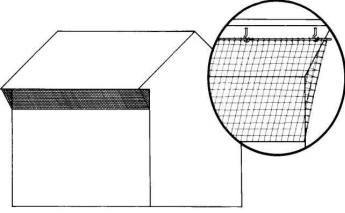
Fig. 3. Netting mounted on building from the outside
edge of the eave down to the side of the building.
Insert shows a method of attachment using hooks and
dowels.
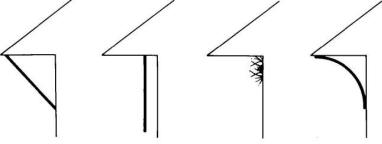
Fig. 4. Four methods which may deter swallow nesting.
From left to right: Netting attached from the outer edge
of the eave down to the side of the building; a curtain
of netting; metal projections along the junction of the
wall and eave; fiberglass panel mounted to form a
smooth, concave surface.
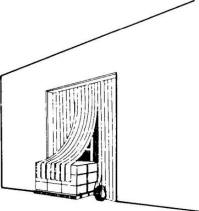
Fig. 5. Strip doors of vinyl plastic allow passage of
equipment and exclude swallows and other birds.
A fresh coat of paint that
dries to a slick surface is sometimes effective. On
rough surfaces, painting is of doubtful value because it
does not alter the basic rough texture of the surface.
Painting may be effective on smoother surfaces, but this
technique has not been thoroughly tested.
Metal projections such as
Nixalite® and Cat Claws® are sharp, needle-like wire
devices generally installed on building ledges and
window sills to discourage pigeons and starlings from
roosting. Although adaptable to mounting and use under
eaves, metal spines have not been widely used for
swallow control (Fig. 4). In one instance, cliff
swallows learned to land on the metal spines and
eventually built nests attached to them.
Architectural Design.
Although all the factors that constitute a suitable
colony site are not yet understood or documented,
architectural design does influence colony site
suitability. Buildings with overhanging eaves at acute
to right angles with the wall are potential nest sites.
Conversely, sites where the overhang and wall meet at an
obtuse angle or are rounded and concave are rarely used.
The width of the overhang may be important to site
suitability, although the point at which this becomes
critical is unknown. Few colonies are observed with an
overhang of less than 6 to 8 inches (15 to 20 cm).
Substrate texture is a
factor; wood, stucco, masonry, and concrete surfaces are
favorable substrates for nest attachment. Metal is
rarely used as a nest substrate. Nests on metal surfaces
are usually located at a crotch or joint where the
swallow can gain a foothold. In situations where
construction is planned and swallows are present on
nearby structures, consideration to materials and design
may eliminate future problems. Swallows may move to
nearby structures if control is applied at an existing
colony.
Frightening
Hawk, owl, or
snake models; noisemakers; and revolving lights have
shown little, if any, success or are unproven against
swallows. As evidenced by nests in and on buildings,
barn and cliff swallows are relatively tolerant of human
activity and other disturbances.
Repellents
Chemical roost
repellents (polybutenes, sticky pastes, sprays) have not
been proven effective. Unless a suitable nesting site is
almost entirely covered with repellent, swallows will
still be able to land, gain a foothold, and begin nest
construction. A sticky repellent may actually be
counterproductive by improving nest adherence. Cliff
swallow nests built over a sticky repellent have been
observed. Since state pesticide registrations vary,
check with your local Cooperative Extension office for
information on possible repellents.
Toxicants, Trapping, and
Shooting
There are no
chemical toxicants currently registered by EPA for
swallow control, and shooting, trapping, or harming
swallows is not permitted.
Nest Removal
Nest removal
should be initiated at the first sign of nest building
because of the difficulty in obtaining a permit to
remove nests with eggs or young. Usually nests can be
washed down with a water hose or knocked down with a
pole. Removing nests by these methods is a messy and
time-consuming process and may cause dispersal of nest
parasites and water damage to the building.
As builders of mud nests,
swallows have evolved to persist despite nest failures
from rain or moisture. Washing down nests is nothing
more than an artificial rainstorm. Because swallows will
persistently rebuild nests, removal will be required for
several days during nest building. Persistence is
undoubtedly affected by the physiological condition of
the swallows, past nesting history at the site, and the
availability of alternate sites. The swallows may return
the following year, and unless additional control
measures are implemented, the whole process may need to
be repeated.
Leaving swallow nests
intact may be appropriate in some instances. For
example, if swallows have established a colony, raised
their young, and left, nest removal would also remove
nest parasites, thus improving the site for the swallows
returning the next spring. Swallow bugs will overwinter
in the nests, and if the parasite load is high in the
spring, the swallows might abandon the colony. If not,
they would probably reoccupy the nests. At the first
signs of reoccupancy, such as repair of old nests or
building of new nests, nest removal (with a permit in
some locations) should be started and continued until
the nesting attempts end.
Economics of Damage and Control
Costs of damage are
difficult to quantify and vary with the particular site
and the method of control employed. The cost of actual
or potential damage can range from the cleanup of
droppings on and around a structure, to thousands of
dollars from swallows contaminating foodstuffs at a
processing center or posing a danger to aircraft at an
airport. Similarly, control costs vary greatly. When
hosing is used, costs are primarily labor-related. Net
is relatively inexpensive (from about $9 to $33 per
1,000 square feet depending on quantity purchased, 1992
prices) and is reported to be effective for 4 to 5 years
before replacement is necessary. Labor and other
equipment costs to install netting, however, can be
quite high. For example, mounting net on a concrete
versus a wooden structure, or 100 feet (30 m) versus 10
feet (3 m) above the ground can drastically increase
costs. Costs for each site must be judged on an
individual basis.
Acknowledgments
Figures 1 through 5 by
Arlene Chin, Senior Artist, Visual Media, University of
California, Davis.
For Additional Information
Anon. 1981. Bird control problem solved with netting.
Pest Control 49:28-29.
Barclay, R. M. R. 1988.
Variation in the costs, benefits, and frequency of nest
reuse by barn swallows (Hirundo rustica). Auk 105:53-60.
Beal, F. E. L. 1918. Food
habits of the swallows, a family of valuable native
birds. US Dep. Agric. Bull. No. 619. 28pp.
Brown, C. R., and M. B.
Brown. 1986. Ectoparasitism as a cost of coloniality in
cliff swallows (Hirundo pyrrhonota). Ecol. 67:1206-1218.
Emlen, J. T., Jr. 1952.
Social behavior in nesting cliff swallows. Condor
54:177-199.
Emlen, J. T., Jr. 1954.
Territory, nest building, and pair formation in the
cliff swallow. Auk 71:16-35.
Emlen, J. T. 1986.
Responses of breeding cliff swallows to nidicolous
parasite infestations. Condor 88:110-111.
Erskine, A. J. 1979. Man’s
influence on potential nesting sites and populations of
swallows in Canada. Can. Field Nat. 93:371-377.
Johnsgard, P. A. 1979.
Birds of the Great Plains: breeding species and their
distribution. Univ. Nebraska Press, Lincoln. 539 pp.
Mayhew, W. W. 1958. The
biology of the cliff swallow in California. Condor
60:7-37.
Moller, A. P. 1990.
Effects of parasitism by a haematophagous mite on
reproduction in the barn swallow. Ecol. 71:2345-2357.
Pochop, P. A., R. J.
Johnson, D. A. Aguero, and K. M. Eskridge. 1990. The
status of lines in bird damage control—a review. Proc.
Vertebr. Pest. Conf. 14:317-324.
Samuel, D. E. 1971. The
breeding biology of barn and cliff swallows in West
Virginia. Wilson Bull. 83:284-301.
Speich, S. M., H. L.
Jones, and E. M. Benedict. 1986. Review of the natural
nesting of the barn swallow in North America. Am. Midl.
Nat. 115:248-254.
Editors
Scott E. Hygnstrom Robert
M. Timm Gary E. Larson
PREVENTION AND CONTROL OF
WILDLIFE DAMAGE — 1994
Cooperative Extension
Division Institute of Agriculture and Natural Resources
University of Nebraska -Lincoln
United States Department
of Agriculture Animal and Plant Health Inspection
Service Animal Damage Control Great Plains Agricultural
Council Wildlife Committee
E-128
01/09/2007
Special
thanks to:
Clemson University
|